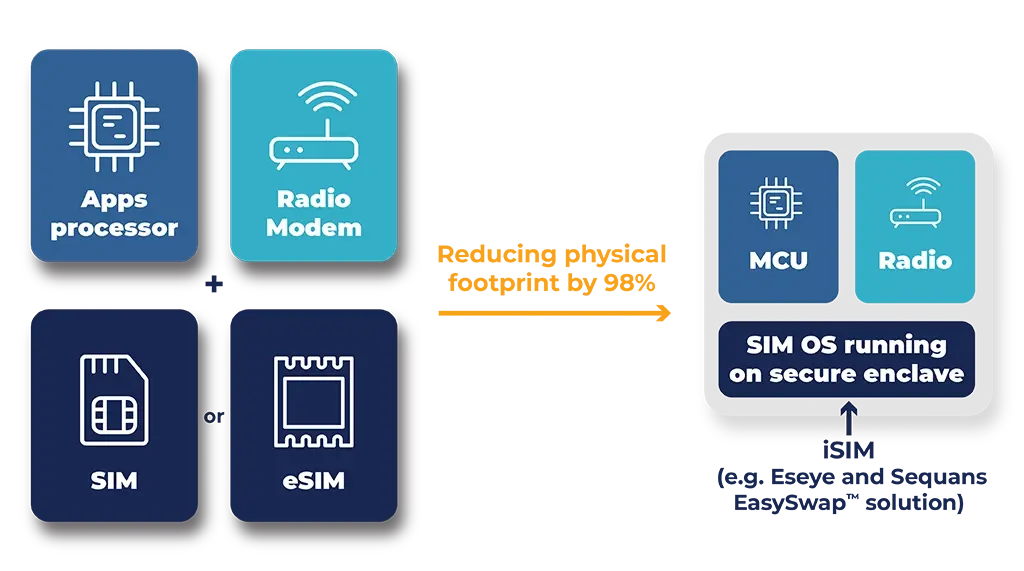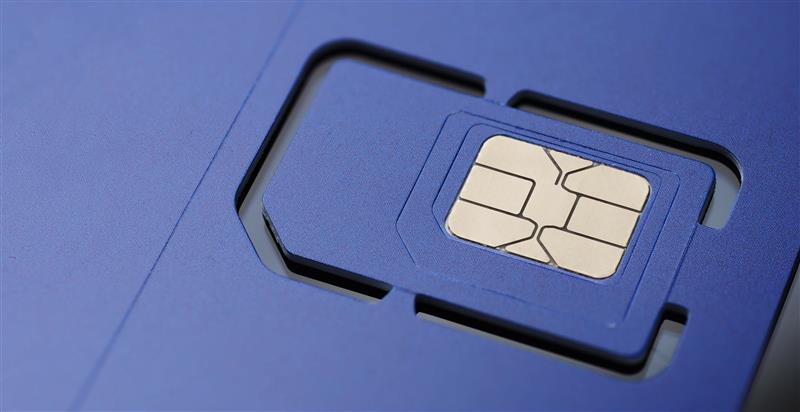Quick Summary
iSIM (Integrated SIM) integrates SIM functionality directly into a device’s chipset. This technology reduces the need for physical SIM cards, enhances security, and can lower device costs, making it suitable for compact and cost-sensitive IoT applications.
What is iSIM?
iSIM stands for “Integrated SIM” and is an evolution of SIM technology where cellular connectivity and subscriber identity management functionality are integrated into a System-on-Chip (SoC).
Unlike traditional physical SIM cards that need to be inserted or embedded into a device, moving the SIM into a SoC reduces the footprint required on the device for connectivity components.
How does iSIM work?
A SoC for cellular connectivity would typically include a microcontroller, cellular modem and the SIM, which includes the SIM operating system, applications and a secure vault for storing sensitive data, such as mobile subscription identifiers.

The purpose of SIMs is to ensure that devices authenticate and connect securely and reliably to networks and the cloud. Removeable and embedded SIMs are hosted in exceptionally secure chips, similar to those used in bank cards. They’re designed – and tested – to resist highly sophisticated physical and logical attacks.
Challenges of iSIM for IoT
The challenge for SoC manufacturers is to design chips with advanced security mechanisms that can detect possible attacks and provide the same levels of resistance as existing SIMs.
To meet the security requirements, the iSIM is contained within a Tamper Resistant Enclave (TRE), also known as a secure enclave. Recognised by the Trusted Connectivity Alliance, a TRE uses hardware and low-level software capabilities to provide hosting for secure applications and their confidential and cryptographic data.
SoC manufacturers need to achieve GSMA certification for their iSIM chips if the technology is going to be trusted and adopted widely.
Benefits of iSIM for IoT
Built within a secure enclave in the SoC to GSMA specifications, iSIMs provide the same levels of identity authentication, security and seamless connectivity as embedded SIMs.
But the benefits of iSIM technology over SIMs of other form factors can also address issues that are holding IoT back.
- Small size – reduced footprint for connectivity components
- Less power, more performance
- Reduced risk of damage for ruggedised devices
- Reduced production cost and supply chain complexity
- Root of Trust (RoT) support for secure and edge applications
Choosing a connectivity solution for your device
For any connected device to deliver on its promise, it must have access to a secure, reliable connection. Are you looking to produce and deploy IoT devices but not sure which connectivity solution you need?
Our article, “Cellular IoT Connectivity: What Business Leaders Need to Know” provides valuable insights for achieving success in cellular IoT. It covers topics such as selecting the optimal network, maximising coverage and uptime, and addressing connectivity design considerations for your device.
Read our cellular IoT connectivity guide
Go beyond with iSIM
Learn more about Sequans easySWAP with Eseye AnyNet Connectivity Solution which delivers the world’s first global, secure and end-to-end commercial iSIM for IoT.
Ian has a passion for developing technology-based solutions that deliver real improvements to businesses, the environment and quality of life.
Previously he co-founded CompXs to deliver the world’s first ZigBee design. Prior to CompXs, Ian held senior software leadership roles at Philips and has since spearheaded the ground-breaking innovation of our global AnyNet Secure cellular solution.

